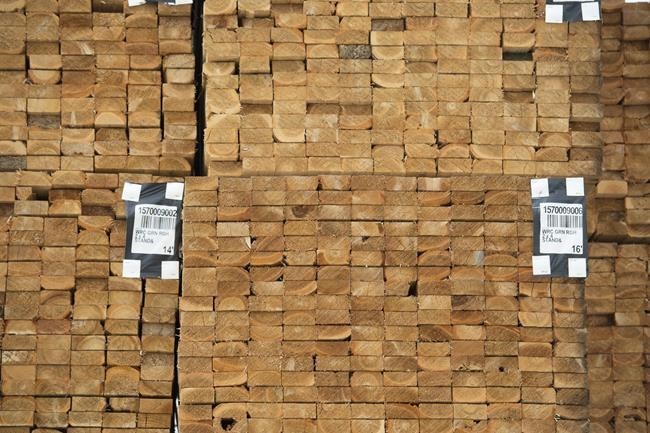CALGARY — The recent softening of record high prices for lumber could translate into relief for homebuyers and do-it-yourselfers while continuing to spur high profits for producing companies, analysts say.
The higher cost of lumber has translated into about $10,000 or more in extra costs for each typical single family home and has been an irritant for an otherwise healthy new home market in Canada, said CEO Kevin Lee of the Canadian Home Builders Association.
He added that shortages of certain products have made it difficult for builders to complete projects on time this summer, noting higher lumber prices are leading to higher home prices.
"We definitely have seen developers and builders putting some projects on hold when they come to a certain point because it's just so hard to price new construction with prices going up and up and up," he said on Monday.
The industry's hope is that prices will fall and supply firm up as the summer construction season comes to a close, allowing builders to take advantage of what's expected to be a continuing high level of demand from people working from home because of the COVID-19 pandemic.
Many lumber producers temporarily shut down mills due to the novel coronavirus early this year, reducing inventory levels as demand rose for renovations and new homes.
A US$14 drop to US$941 per thousand board feet in the North American framing lumber composite price on Friday represents the first weekly decline noted by industry watcher Random Lengths since April 10, said RBC analyst Paul Quinn in a report.
In the same week last year, the price was just US$367.
"Buyers largely stepped to the sidelines as prices began to fall," Quinn said. "We would not be surprised to see continued declines in the coming weeks, but would note that the November lumber futures contract increased US$28 week-over-week to US$607 per thousand board feet."
Random Lengths reported that oriented strand board, a panel product commonly used to sheath new houses, was unchanged on the week at US$690 per thousand square feet, up from US$218 a year ago.
Lumber prices are still high by historic measures but a little more weakness is starting to creep into the market and there is "some downward pressure," said Kevin Mason, managing director of ERA Forest Products Research.
"With these very high prices, you are seeing an impact on demand. So there are some projects that are getting postponed," he said, adding some multi-family developments could be looking at millions of dollars in additional costs from higher building product prices.
"You have a seasonal slowing in demand and the retail (renovation) demand is slowing as well.
However, he said the change in prices will simply drop lumber producers from “astonishingly profitable” to “remarkably profitable” levels, adding he expects robust financial results for the remainder of this year and likely through 2021.
This report by The Canadian Press was first published Sept. 28, 2020.
Dan Healing, The Canadian Press




